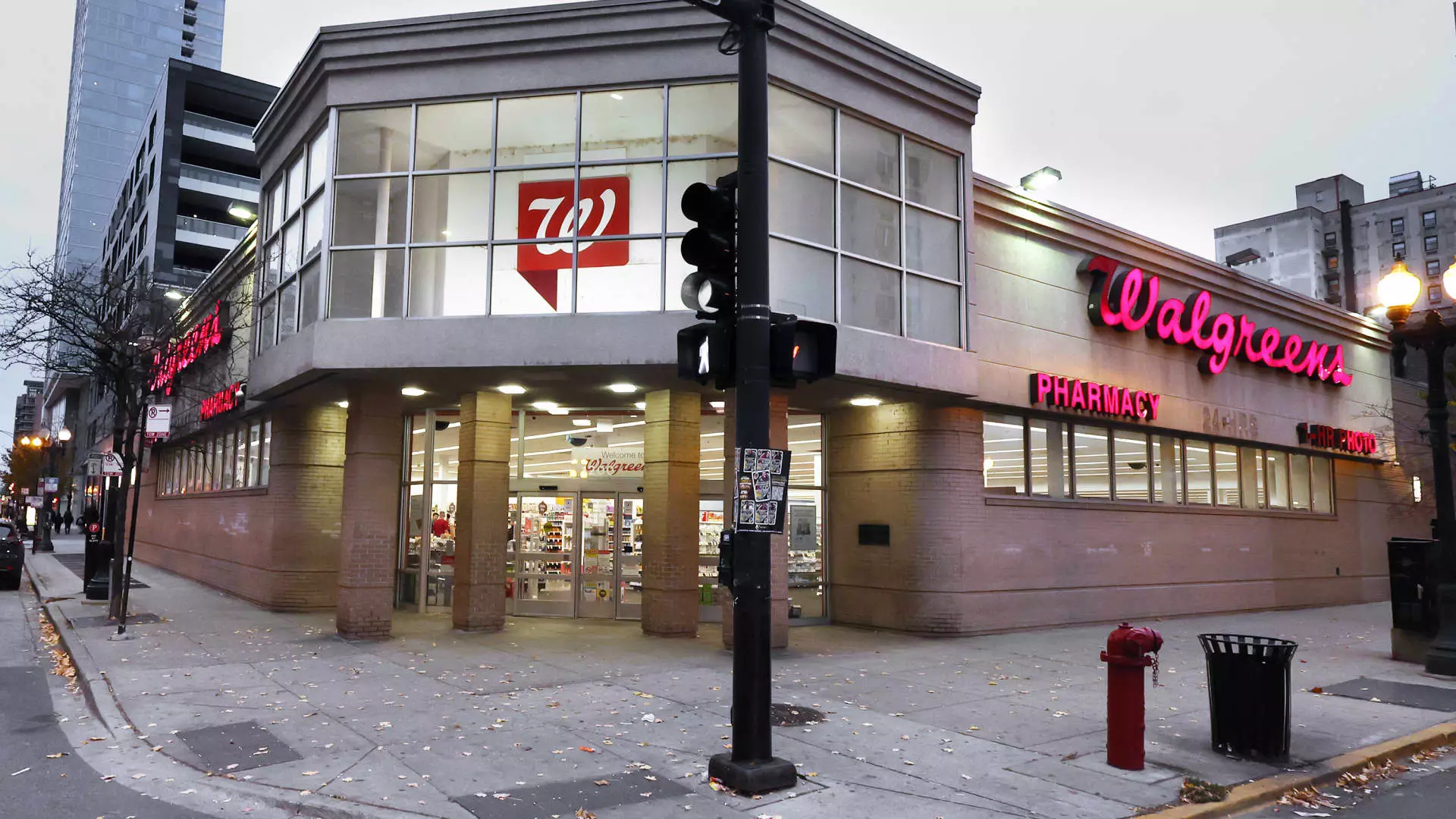Walgreens is a name synonymous with quick service and pharmacy essentials. However, as the company stocks plummet and restructuring plans surface, the once-stalwart retail drugstore chain finds itself at a crossroads. Recently, Walgreens reported fiscal second-quarter earnings that managed to surpass expectations, but a closer inspection reveals a company grappling with escalating pressures from various fronts. The impending transition to a private entity under Sycamore Partners, valued at approximately $10 billion, is not just a mere financial transaction; it signifies the end of an era that began back in 1927 and provides a lens into the challenges faced in the modern retail landscape.
Although Walgreens boasted an increase in revenue to $38.59 billion—up 4.1% year-over-year—the devil is in the details. A staggering net loss of $2.85 billion is certainly a red flag, overshadowing even the most positive financial announcements. CEO Tim Wentworth claims that the results reflect a disciplined approach to cost management, specifically in terms of their U.S. healthcare divisions. However, when juxtaposed with weaker retail performance and severe legal settlements, one cannot shake the feeling that these measures may not be sufficient for the storm ahead.
Cost-Cutting Measures: A Double-Edged Sword
In a world where consumer habits shift faster than the blink of an eye, cost-cutting might be a necessary evil, but it is fraught with long-term consequences. Walgreens has embarked on a journey of store closures and operational cuts in response to a toxic mix of pharmacy reimbursement headwinds and fierce competition from rivals like CVS and tech giants such as Amazon. While these actions ideally aim to bolster financials, they also risk alienating the customer base, particularly in communities that have relied on Walgreens as a staple for affordable healthcare services.
As it stands, the growing competition not only pressures margins but also casts a shadow over the brand’s future. Although certain lines of business are performing adequately, considerably weaker results in the U.S. Retail Pharmacy sector reveal the fragility of the current strategy. Shrinking store networks and layoffs could lead to erosion in customer trust, which is as invaluable as any dollar generated from sales.
Legal Struggles: Validating Concerns Over Sound Practices
Walgreens is no stranger to controversies, especially in light of ongoing opioid-related settlements that have swallowed nearly $1 billion from operational cash flow. While settlements are part of corporate risk management, they raise fundamental questions about Walgreens’ ethical practices and accountability. This legal entanglement showcases a disarray of priorities within the organization. Reputation, once thought to be solid, is now hanging by a thread, threatening not just financial standing but long-standing customer loyalty as well.
The ongoing dispute with Everly Health Solutions over contract breaches further complicates an already murky operational landscape. Customers may wonder, “Can I truly trust Walgreens with my health?” Doubts regarding transparency and corporate ethics can severely damage relationships that are central to community pharmacies.
Can a Turnaround Plan Really Turn the Tide?
Walgreens is still at the inception of its turnaround plan, one that Wentworth argues will require significant time, focus, and investment. While the aspiration for “meaningful value creation” is commendable, what constitutes “meaningful” when set against a backdrop of subpar performance and problematic relationships?
To substantiate the future of the brand in its healthcare investments, like the engagement with VillageMD, it is essential to maintain a robust strategy that balances cash needs with necessary capital influx. Burdened by past mistakes, this new path should involve a deep introspection of stakeholders’ needs, emphasizing customer service and product reliability over mere profit margins.
As Walgreens navigates its way through this enormous transformation, shareholders and consumers alike will scrutinize each move. The question looms larger than ever; will the pharmacy giant’s future bring revival or irrelevance? The risk is high, but so too is the reward for a well-executed approach in one of the most volatile retail sectors to date.

